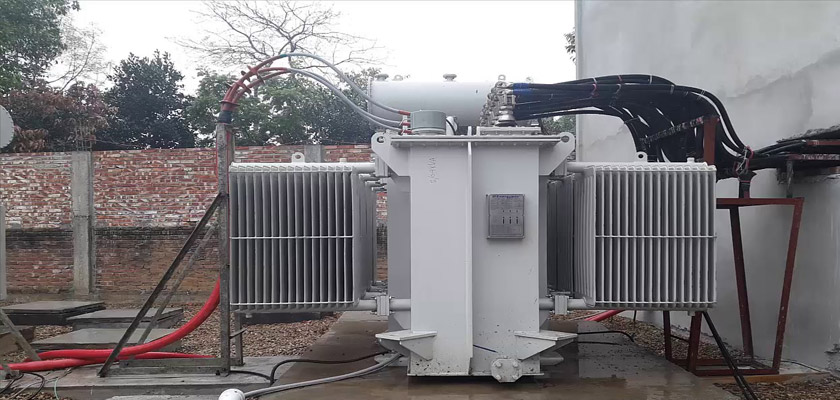Is it possible to use a 30VA transformer in a 40VA application? And if so, what would be its impact? The power rating of a transformer can definitely be increased with the biggest impact being an additional temperature rise and a slight output voltage drop at full load, because of the increased output load. Another question that may arise is that if we don’t take the temperature rise into account, is it possible that the transformer power can be infinitely increased? Now, this is just the case as filling a tea cup more than its finite volume capacity, resulting in the tea to overflow. Similarly, infinitely increasing the transformer power is also impossible as it will result in power overflow. The problem here is the power transfer capability of the transformer.
An ideal power transformer is a device that neither produces, nor stores or consumes any energy. All it does is transfers the power from the power network to the load by changing the primary and secondary voltage in accordance to the fixed turns ratio. However, the power cannot be transferred completely because of the core loss and copper loss. In a transformer, as long as the primary is connected to a voltage source, the secondary will induce an output voltage.
Under no-load conditions, the loop in the primary circuit and the open secondary circuit result in current flow through the primary circuit. This current is known as the no-load current, which can be considered as the transformer excitation current. It is this excitation current that establishes the working magnetic field and changes the output voltage. In case of a very small excitation current, the magnetic field strength produced is applied to the core, which is then magnetized, resulting in weak magnetic field. When the field current increases, the core is magnetized, which produces a rapid increase in magnetic flux. When the excitation current increases to a certain level, the change in magnetic field strength is much larger than the change in magnetic flux density. At this point, the transformer core reaches saturation. It is important to note here that the saturation level of a transformer is dominated by the input voltage, and not the current.
Under loaded conditions, the secondary circuit is reflected to the primary circuit, which results in a very large excitation reactance, as compared to the secondary reflected impedance to the primary side. If the input voltage here does not change, the excitation current remains unchanged, while the current of the primary side increases with energy transfer. Therefore, the increased current in the primary current balances the current generated by secondary load. In this case, if the load is infinitely increased, both the primary and secondary currents increase. This results in reduction of voltage loaded into the field excitation circuit, and lower magnetizing current and secondary induced voltage. Simultaneously, the voltage drop of secondary winding becomes larger, thus significantly reducing load voltage.
While designing transformers, the appropriate magnetic flux density needs to be carefully selected to ensure that the transformer does not saturate. Also, proper winding wire gauge should be chosen to allow temperature rise to be within a reasonable range for energy consumption and the application. All these rules must be considered while designing the planning of a transformer. As a transformer designer and engineer, it is important to also remember that a transformer needn’t be designed as large and bulky in order to meet performance requirements. There must be a balance between the size, performance, manufacturability, and other factors. Therefore, a transformer must be designed as close as possible to its maximum power transfer capability with a reasonable temperature rise. Once the core size of the transformer is determined, the maximum power transfer capability can also be determined and predicted. Miracle Electronics is a name you can rely upon to get the best planned as well as customized power transformers in India that provide the highest level of safety to the operator by regulating and stepping down voltages to machine tool control devices.




